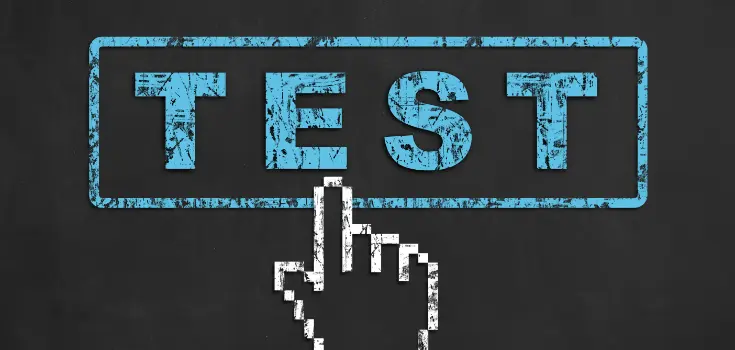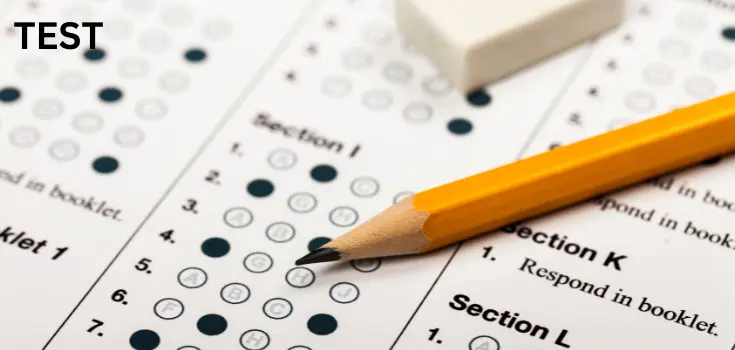Rice Purity Test is a fun self-assessment quiz that measures your innocence based on life experiences. Check your purity score now and compare with friends.
Click on every item you have done.
Rice Purity Test
Your Score
The Rice Purity Test is one of the most well-known social quizzes among students and young adults. Originally created at Rice University in Houston, Texas, this lighthearted self-assessment was designed to gauge a student’s life experiences in areas like academics, relationships, and social behavior.
First introduced in the 1980s, the test began as a bonding activity for freshmen, allowing them to compare life experiences in a non-serious, humorous way. Over time, it spread beyond Rice University, becoming a viral trend on college campuses and eventually on the internet. Today, it continues to attract new generations of students curious about how their “purity score” compares to friends.
What Is the Rice Purity Test?
The Rice Purity Test is a 100-question survey that asks participants about their personal experiences, ranging from innocent activities (holding hands, going on dates) to more risqué behaviors.
- Scoring system: Participants receive a score between 0 and 100.
- 100 indicates complete “purity” (little to no life experiences in the listed activities).
- 0 represents having done all activities listed in the test.
- Purpose: While the test was never meant to be scientific, it became popular for:
- Self-assessment of life experiences
- A social icebreaker among peers
- Entertainment and humor
In short, it’s less about judgment and more about curiosity and fun.
History & Evolution of the Rice Purity Test
The test originated in the early 1980s at Rice University, where it was distributed to new students as part of orientation week. Its goal was to ease conversations, break the ice, and foster community.
As the internet grew, so did the test’s reach. By the 2000s, online versions made it accessible to anyone, not just Rice students. In recent years, it has resurfaced as a viral social media trend, especially on TikTok and Instagram, where users compare scores and create reaction videos.
Modern variations have also emerged, with updated questions to reflect contemporary student life and cultural shifts.

How to Take the Rice Purity Test
Taking the Rice Purity Test is simple and usually done online.
Step-by-step guide:
- Visit a website that hosts the Rice Purity Test (e.g., ricepuritytest.com, ricepuritytest.fun).
- Read through the 100 questions and check off any activities you’ve done.
- Submit your answers to generate your purity score.
- Compare your score with friends or share it online if you like.
Most versions are self-scoring and completely anonymous, making it a lighthearted and private activity.
Interpreting Your Rice Purity Score
While the score is meant for fun, students often compare results for laughs or curiosity. Here’s a general breakdown:
- 90–100: Very Pure – Limited experiences, often younger students.
- 70–89: Moderately Pure – Some life experiences, balanced lifestyle.
- 40–69: Average – Represents most college students; mix of fun and responsibility.
- 20–39: Experienced – Wide range of experiences, more adventurous.
- 0–19: Wild – Very few boundaries left unexplored.
It’s important to remember that the score does not define character, intelligence, or worth—it’s simply a playful comparison.
Why Do Students Take the Rice Purity Test?
The test remains popular because it combines humor, curiosity, and relatability.
- Peer bonding – A fun activity among friends or roommates.
- Curiosity – Students want to see how their experiences stack up.
- Self-reflection – Encourages people to think about their personal choices.
- Entertainment – It’s a trend-driven, viral activity on social media.
From a psychological perspective, it’s also a way to normalize life experiences, showing students they’re not alone in their journey.
Also Check: Monketype Typing Test
Controversies & Criticisms
Despite its popularity, the Rice Purity Test has faced criticism.
- Outdated content: Some questions reflect cultural norms of the 1980s and may not resonate today.
- Judgment concerns: Students may feel pressure or embarrassment about their score.
- Privacy issues: While online versions are usually anonymous, sharing results can expose personal information.
Critics argue that the test can promote unhealthy comparisons, though most students approach it lightheartedly.

Alternatives to the Rice Purity Test
If you’re looking for fun, non-judgmental alternatives, there are many other quizzes online:
- Personality quizzes (e.g., MBTI, Big Five).
- BuzzFeed lifestyle quizzes (lighthearted and trendy).
- Love languages test (helps with self-awareness in relationships).
These offer similar entertainment value without the controversies.
Conclusion
The Rice Purity Test has stood the test of time, evolving from a college orientation activity into a viral online trend. Though not meant to be scientific, it remains a fun way for students to bond, laugh, and reflect on their experiences.
If you’re curious about where you stand, why not give it a try?
Take the Rice Purity Test now and see your score!
People Also Ask
What’s a normal rice purity score?
A normal score typically ranges from 50 to 80, thus indicating a moderate level of life experience. Additionally, this range suggests a balance between innocence and exposure to various activities.
What does 100% on rice purity mean?
It means the participant hasn’t engaged in any of the listed activities, thus thereby reflecting complete “purity” and demonstrating a lack of exposure to those experiences.
What does 45 mean on the rice purity score?
A score of 45 suggests a significant level of life experience.
Where does the rice purity test come from?
Rice University created the test as a social bonding activity for new students.
What purity test says about you?
It reflects your life experiences but doesn’t define who you are.
How does a purity test work?
Participants answer “yes” or “no” to a series of questions, with each “yes” decreasing the score.
How do I play the rice purity test?
Answer each question honestly with “yes” or “no.”
Is a 94 rice purity test good?
Yes, it indicates a high level of purity.
Is the rice purity test anonymous?
Yes, it is typically taken anonymously.
What is a 77 on the rice purity test?
It indicates a moderate level of experience.
What is a 93 rice purity score?
It indicates a high level of purity.
